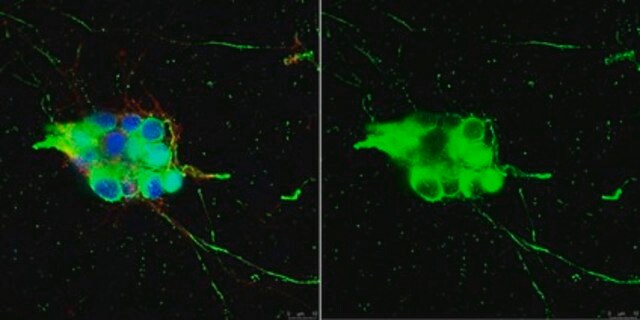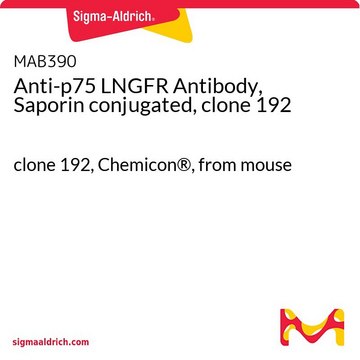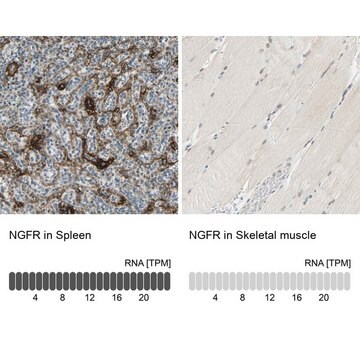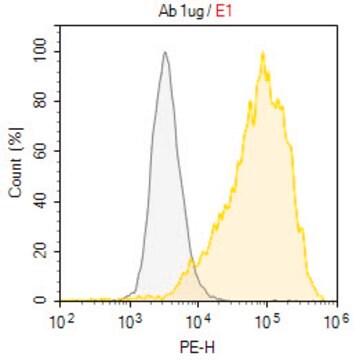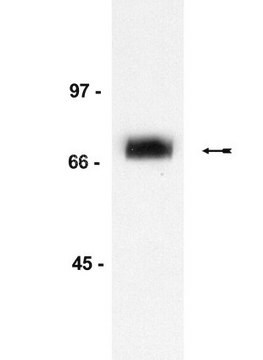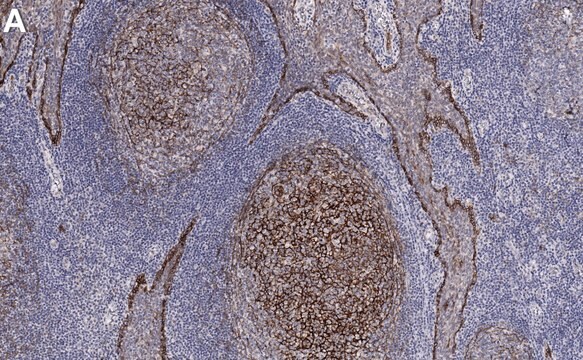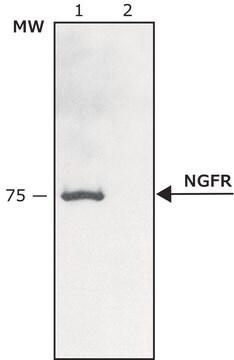Wichtige Dokumente
N5408
Monoclonal Anti-Nerve Growth Factor Receptor (NGFR p75) antibody produced in mouse
clone ME20.4, ascites fluid
Synonym(e):
Anti-NGFR p75
About This Item
Empfohlene Produkte
Biologische Quelle
mouse
Qualitätsniveau
Konjugat
unconjugated
Antikörperform
ascites fluid
Antikörper-Produkttyp
primary antibodies
Klon
ME20.4, monoclonal
Mol-Gew.
antigen 75 kDa
Enthält
15 mM sodium azide
Speziesreaktivität
racoon, monkey, pig, human, feline
Darf nicht reagieren mit
mouse, chicken, rat
Methode(n)
flow cytometry: suitable
immunohistochemistry (formalin-fixed, paraffin-embedded sections): 1:1,000 using human tongue
immunohistochemistry (frozen sections): suitable
immunoprecipitation (IP): suitable
indirect ELISA: suitable
microarray: suitable
neutralization: suitable
radioimmunoassay: suitable
western blot: suitable
Isotyp
IgG1
UniProt-Hinterlegungsnummer
Versandbedingung
dry ice
Lagertemp.
−20°C
Posttranslationale Modifikation Target
unmodified
Angaben zum Gen
human ... NGFR(4804)
Allgemeine Beschreibung
Spezifität
Immunogen
Anwendung
- for enzyme linked immune sorbent assay (ELISA)
- immunoprecipitation, immunoblotting and immunohistochemistry
- for immunocytochemistry (acetone- or formalin-fixed, Bouin′s solution - or formalin- fixed paraffin-embedded)
- for electron- microscopy radioimmunoassay (RIA) (Kd of 7x10-10 M)
- flow cytometry
- for the inhibition of binding of NGF to the receptor
- for rossette assay
- as a cholinergic immunotoxin
Biochem./physiol. Wirkung
Physikalische Form
Lagerung und Haltbarkeit
Haftungsausschluss
Sie haben nicht das passende Produkt gefunden?
Probieren Sie unser Produkt-Auswahlhilfe. aus.
Ähnliches Produkt
Lagerklassenschlüssel
10 - Combustible liquids
WGK
nwg
Flammpunkt (°F)
Not applicable
Flammpunkt (°C)
Not applicable
Hier finden Sie alle aktuellen Versionen:
Besitzen Sie dieses Produkt bereits?
In der Dokumentenbibliothek finden Sie die Dokumentation zu den Produkten, die Sie kürzlich erworben haben.
Unser Team von Wissenschaftlern verfügt über Erfahrung in allen Forschungsbereichen einschließlich Life Science, Materialwissenschaften, chemischer Synthese, Chromatographie, Analytik und vielen mehr..
Setzen Sie sich mit dem technischen Dienst in Verbindung.
